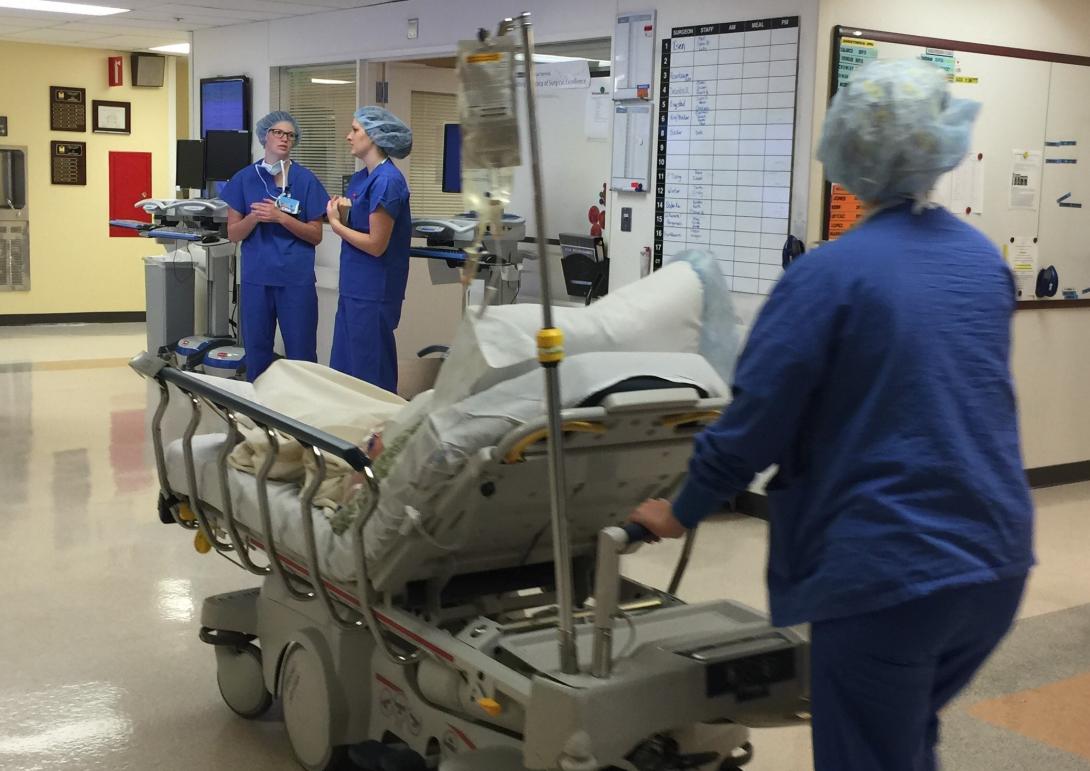
Gov. Kate Brown sent a letter to Vice President Mike Pence asking for more supplies and federal funding for Oregon to be prepared for cases of COVID-19 throughout the state.
Brown’s letter, sent Tuesday, estimated that the state will need millions of dollars a month and asked for more personal protective equipment to guard against the spread of the respiratory disease.
“Significant resources and funding will be needed in the days and months ahead to respond to and contain this outbreak,” Brown wrote. “As the situation evolves, so too do our needs. We currently estimate our financial need at between $7 million and $10 million per month to support the additional resource needs for state and local public health, in addition to reimbursing the costs already incurred.”
On Wednesday, U.S. Rep. Greg Walden, R-Oregon, said the Centers for Disease Control and Prevention was giving Oregon $500,000 to combat coronavirus as part of an $8.3 billion emergency funding package. That news came a day after Pence briefed Brown and other governors.
In her letter, Brown wrote that state officials are concerned that they will not have a sufficient supply of personal protective equipment if COVID-19 spreads more widely.
Her request sought 400,000 N-95 respirators, gowns and gloves, protective Tyvek suits, Biocell Ambulance Protection Systems and 75 to 100 ventilators.
Portland-area hospitals told The Lund Report they’re prepared for more cases -- one person is hospitalized at Kaiser Permanente Westside Medical Center in Hillsboro -- but sources said at Oregon Health & Science University said the university has recently rationed high-level sterile gowns.
Oregon has received one kit from the Centers for Disease Control and Prevention that is capable of performing 1,500 tests.
The state has tested 50 people since Jan. 24, with three people testing positive. Another 29 people have tested negative. Test results are pending for 18 people.
Testing guidelines are set by the CDC, which the state is required to follow as a recipient of the kit. Pence announced late Tuesday that testing criteria would be expanded to allow anyone to get tested if they have a doctor’s order.
Previously, testing was limited to people with symptoms who may have come into contact with an infected person, traveled to high-risk nations or were hospitalized with an undiagnosed respiratory illness.
Brown’s letter, sent prior to Pence’s announcement, asked for more flexibility on the testing criteria which would allow public health officials “to better assess the burden of the disease in Oregon resulting from community spread within the state.”
Two of Oregon’s three positive cases are people who have no obvious source of infection, such as travel or exposure to another person with COVID-19. One person is from Washington County and the other is from Umatilla County. The third COVID-19 case is a person from Washington County who had contact with the first Washington County case. All are adults.
No one has died in Oregon from the virus but nine people have died in Washington state.
There are 80 positive cases in the United States, and public health officials are concerned it could grow beyond that.
The disease started in China but has spread to at least 78 countries, with more than 95,000 cases and over 3,250 deaths, mostly in China, according to Johns Hopkins Center for Systems Science and Engineering.
In Oregon, the health care needs could be wide, particularly in rural areas with fewer resources and health care workers.
“Additionally, as a state with large rural and frontier regions, we have heard significant concerns from our small rural hospitals and health practices about potential workforce shortages and their ability to maintain appropriate staffing levels should this virus spread further,” Brown wrote. “Those concerns are echoed by our local public health departments.”
The state’s also working on how to reduce risk for homeless Oregonians, those living in congregate care and people who need home health care workers, Brown wrote.
You can reach Ben Botkin at [email protected] or on Twitter @BenBotkin1.

